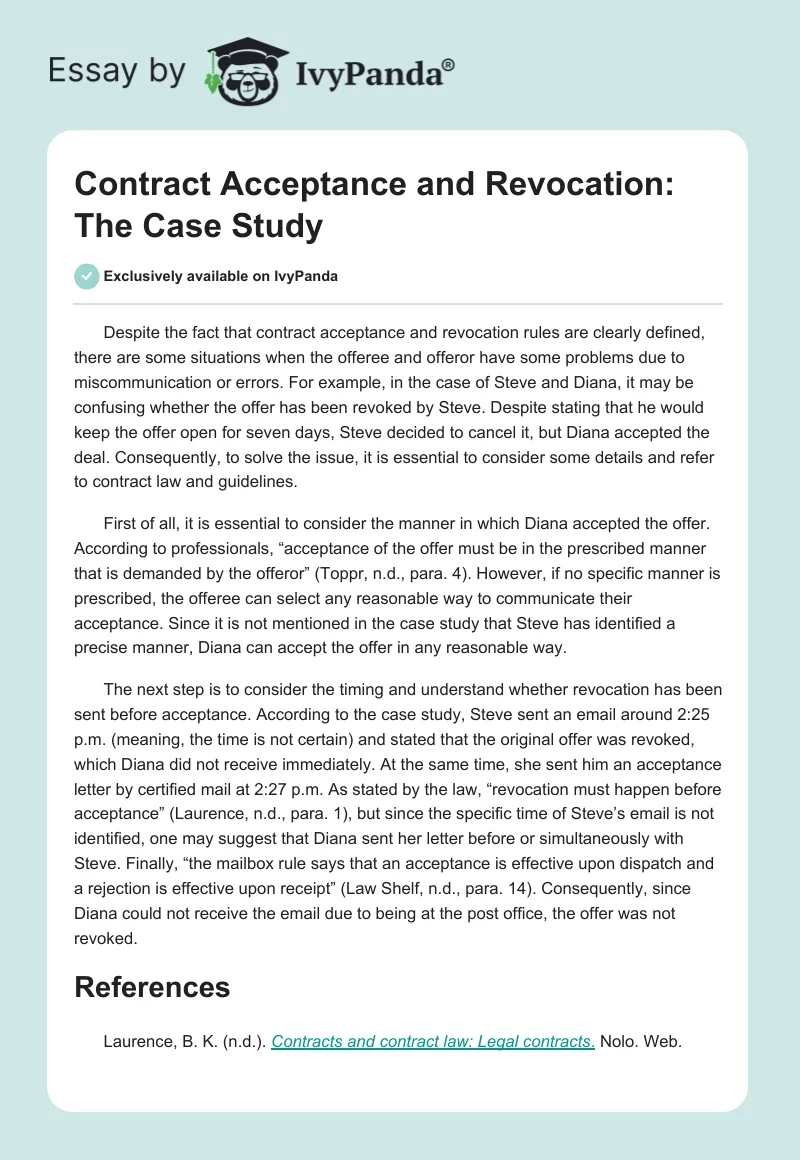Despite the fact that contract acceptance and revocation rules are clearly defined, there are some situations when the offeree and offeror have some problems due to miscommunication or errors. For example, in the case of Steve and Diana, it may be confusing whether the offer has been revoked by Steve. Despite stating that he would keep the offer open for seven days, Steve decided to cancel it, but Diana accepted the deal. Consequently, to solve the issue, it is essential to consider some details and refer to contract law and guidelines.
First of all, it is essential to consider the manner in which Diana accepted the offer. According to professionals, “acceptance of the offer must be in the prescribed manner that is demanded by the offeror” (Toppr, n.d., para. 4). However, if no specific manner is prescribed, the offeree can select any reasonable way to communicate their acceptance. Since it is not mentioned in the case study that Steve has identified a precise manner, Diana can accept the offer in any reasonable way.
The next step is to consider the timing and understand whether revocation has been sent before acceptance. According to the case study, Steve sent an email around 2:25 p.m. (meaning, the time is not certain) and stated that the original offer was revoked, which Diana did not receive immediately. At the same time, she sent him an acceptance letter by certified mail at 2:27 p.m. As stated by the law, “revocation must happen before acceptance” (Laurence, n.d., para. 1), but since the specific time of Steve’s email is not identified, one may suggest that Diana sent her letter before or simultaneously with Steve. Finally, “the mailbox rule says that an acceptance is effective upon dispatch and a rejection is effective upon receipt” (Law Shelf, n.d., para. 14). Consequently, since Diana could not receive the email due to being at the post office, the offer was not revoked.
References
Laurence, B. K. (n.d.). Contracts and contract law: Legal contracts. Nolo. Web.
Law Shelf. (n.d.). The mailbox rule. Web.
Toppr. (n.d.). Acceptance. Web.


